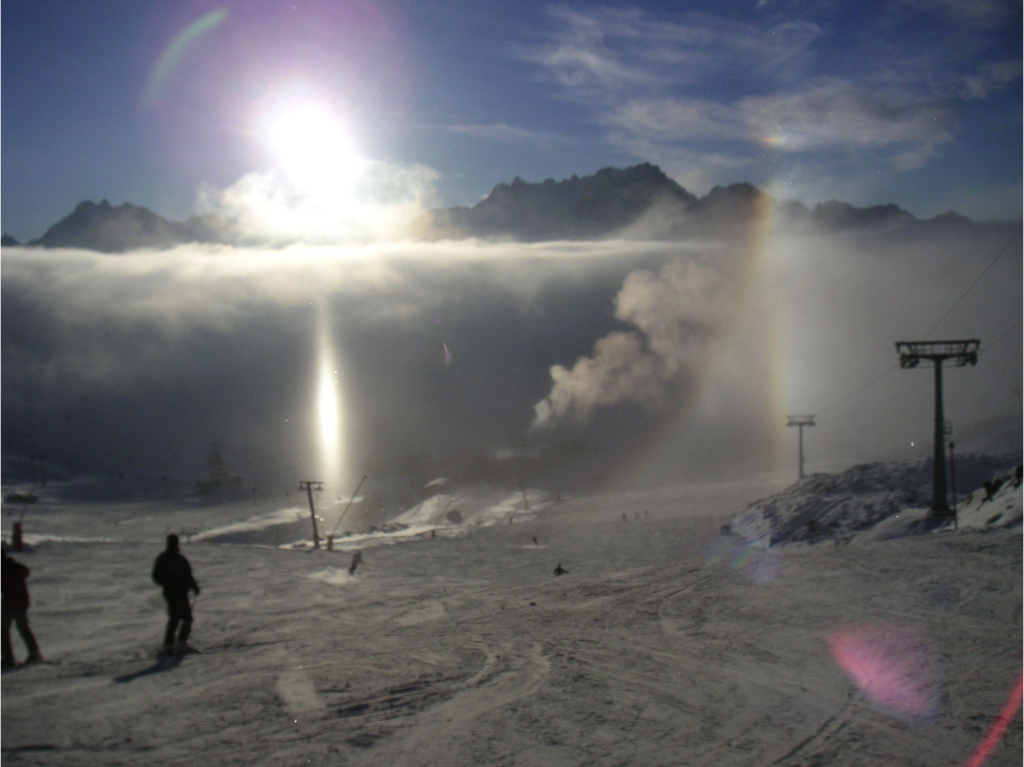
ESSIC/CISESS Scientist Lauren Zamora is first author on a new paper in Atmospheric Chemistry and Physics titled “Comparisons between the distributions of dust and combustion aerosols in MERRA-2, FLEXPART, and CALIPSO and implications for deposition freezing over wintertime Siberia”.
Aerosols are important to a variety of cloud, aerosol, energy budget, and water cycle studies in the climatically important but remote Arctic region. For example, mineral dust aerosols can nucleate ice in clouds and influence Arctic precipitation and warming. However, in cold Arctic conditions, ice crystals can form and precipitate even when there are no clouds. This clear sky precipitation is called diamond dust, and satellites can confuse it with mineral dust aerosols, making aerosol estimates less certain.
Zamora and her team used the AIRS satellite data to identify where diamond dust is most likely to form over the Arctic. They also compared several aerosol products over the Arctic, including the FLEXPART model, the MERRA-2 reanalysis product, and the CALIPSO satellite products in order to set on firmer ground the application of these products for a wide range of scientific aerosol studies. The researchers found that these products are useful for understanding aerosols over the Arctic region, but also show that the satellite dust data are much less reliable in conditions where diamond dust is likely to be present. Diamond dust does not happen often in the summer, but is common in winter over Siberia. This region of the Arctic also has relatively high modeled levels of mineral dust and combustion aerosols. Because the cold and moist conditions favorable to diamond dust formation are also favorable to ice nucleation, Zamora and the team hypothesize that the high mineral dust levels in this region indicate that dust aerosol impacts on ice phase cloud processes may be particularly high over this region.
Zamora is an Associate Research Scientist with ESSIC, working on-site at NASA Goddard Space Flight Center. She joined ESSIC in 2017. Her research focuses on aerosol-cloud interactions and marine biogeochemistry.
To access the article, click here: “Comparisons between the distributions of dust and combustion aerosols in MERRA-2, FLEXPART, and CALIPSO and implications for deposition freezing over wintertime Siberia”.






